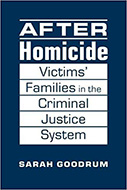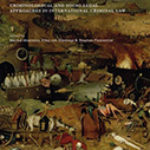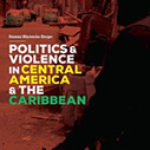After Homicide: Victims’ Family In The Criminal Justice System

Author: Sarah Goodrum
Publisher: Boulder, CA: Lynne Rienner Publishers, 2020. 217 p.
Reviewer: Sam Bieler | September 2020
After Homicide is unlike many academic works finding their way to print. It does not try to develop an all-encompassing theory. It does not urge a radical program of reform to remake the criminal justice system from the first arrest to the last conviction. Yet its goal is no less vital — it seeks to understand what people want from the justice system after their family has been struck by homicide. To answer this question, Professor Sarah Goodrum interviewed victims’ families and the people who worked with them. She also observed every stage of the homicide investigation process. She distills these observations into a clear set of ways to improve how the justice system interacts with families. The book leaves several larger questions unanswered, but the clarity of its recommendations will make it a valuable resource for those on the justice systems’ frontlines.
To explore what families of homicide victims want, Goodrum conducted a two-year ethnographic study of the anonymized “Union County.” During that time, she interviewed 58 people — primarily those whose families had experienced a homicide, but also a mix of other justice system participants including detectives, prosecutors and victim advocates. Goodrum also followed six different murder cases through various stages of Union County’s justice system. This sample is not the largest assembled for an ethnography, but is large enough to draw out some interesting insights.
The primary issue with this setup is not methodological, but descriptive — the reader never learns much about Union County. Goodrum provides details on the demographics of her interviewees but is too aggressive in anonymizing Union County. The reader learns that the county has a “national reputation” as an innovator in victims’ services. Beyond that, however, it is terra incognita. A reader never learns whether it is richer or poorer than other counties, more rural, more urban, or whether it has more or less crime than its peers.
Goodrum argues that, given Union County’s status as a victims’ services innovator, victims who are dissatisfied in Union County are unlikely to be satisfied anywhere else, which is a reasonable assertion. However, it is equally plausible that a victim from a sparsely populated rural county in the American West, one from a dense urban area on the Northeast Corridor and one from a suburb in the South could want different things from their justice system. Knowing a little more about Union County would help readers decide how readily After Homicide’s conclusions can be transported to other settings.
The conclusions Goodrum draws from her study upend much of what is assumed about what victims want. Conventional wisdom holds that victims desire a voice in criminal proceedings and reparations from the people who victimized them. This assumption drove and continues to drive the passage of the many Victims’ Bill of Rights laws beginning in the 1970s. As Goodrum notes, these laws emphasize giving victims a formal voice in proceedings by allowing them to participate in various justice system proceedings, and to address decision-makers through victim impact statements in court.
After Homicide argues that this is not what victims want. Rather, they seek a “compassionate connection” with decision-makers — sympathy from people involved in their cases, including detectives and prosecutors. This gives victims a sense that the system is actively invested in solving the crime. Such connection cannot come from service providers such as grief counselors or victim’s services organizations. In fact, one of the most surprising findings of After Homicide is that about a third of the victims interviewed actively disliked the services they received, and saw them as an impediment to accessing the real powers in their case — detectives and prosecutors.
This insight is a remarkable cleavage from established opinion. In 2018, for example, the Urban Institute (where I used to work) published a fact sheet with the Center for Victim Research suggesting the need to expand traditional services to those victimized by homicide. Additionally, politicians, while lacking research credentials, have frequently used their connections with the community to suggest that public acknowledgment and restitution are victims’ goals — hence the proliferation of these rights across the country. Goodrum’s finding that services may be counterproductive seems to contradict these views, at least in part, so it would have been interesting to explore this topic further, and identify ways to make sure that any resources spent on expanded service delivery are targeted properly.
Also, oddly absent from After Homicide is any discussion of restitution or restoration. Both are usually major concepts in the discussion of crime victims. Requiring restitution payments from those who committed crimes has been a major component of victims’ rights laws at both the state and federal level. At the same time, many in the criminal justice reform movement are critical of the fines and fees levied by the justice system, arguing that they trap people in poverty and create perverse incentives for the justice system. Knowing where actual victims stand on the matter of restitution could help resolve this clash. If victims derive little value from such payments, then the rationale for pursuing this cash through courts is diminished.
Similarly, restoration and restorative justice — a set of techniques focusing on promoting acceptance of responsibility and reconciliation between victim and victimizer — are absent from After Homicide. Such services simply may not be available in Union County. However, prompted by works like John Pfaff’s Locked In, the reform conversation is finally moving beyond the “non-non-non crimes” (nonserious, nonviolent, non-sex) and towards a serious discussion about how to address violent crimes like homicide. Works like Danielle Sered’s Until We Reckon have put restorative justice at the heart of this new push, so it is somewhat surprising that After Homicide does not touch on this, or more of what victims want not just from the justice system, but from those who committed the crime. Given where the reform movement is heading, this is a missed opportunity.
Discussion of high-level reforms aside, After Homicide is valuable for those on the frontlines of the justice system. The book’s practical style does a particularly good job of conveying material to this audience without compromising rigor. Additionally, Goodrum’s succinct prose is easily readable for a busy worker on the go. Furthermore, the decision to organize chapters by specific actors in the justice system makes it easy for a prosecutor or detective to find information relevant to them. After Homicide also concludes most sections with bulleted lists of recommendations for improving interactions with victims. Finally, it wisely relegates the methodology section to an appendix and intersperses additional research throughout (rather than inflicting a literature review on the reader in a separate section).
None of this accessibility comes at the expense of rigor. Academic readers who want to assess Goodrum’s methods will find in the appendix sufficient information to evaluate their credibility, and After Homicide engages with research, prior caveats aside, by incorporating findings into its discussion. Moreover, Goodrum uses the stories she has collected exceptionally well. She incorporates specific excerpts from these narratives alongside her research citations and then includes specific carveouts where she tells victims’ stories in more detail. The combination makes for a remarkably successful merger of the academic and the practical.
This focus on practical advice for frontline workers sets After Homicide apart from many other criminal justice books, which set their sights on grand, sweeping visions of reform. Its recommendations are not wholesale but retail — improving how these workers deal with victims on the worst day of the latter’s lives. For this audience, After Homicide will be a valuable addition to the library.
Sam Bieler worked as a criminologist at the Urban Institute’s Justice Policy Center from 2012 to 2016 and lives in New York City.


